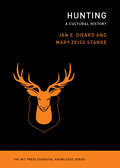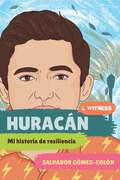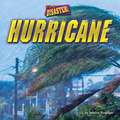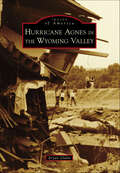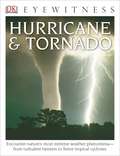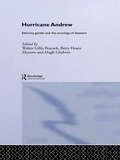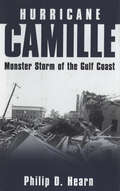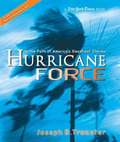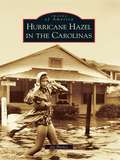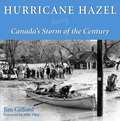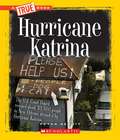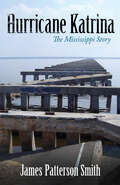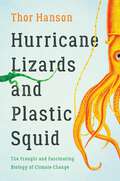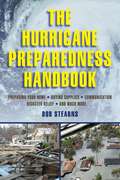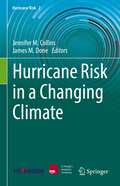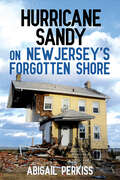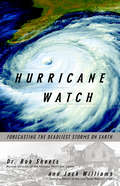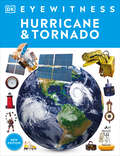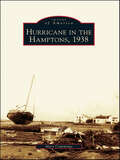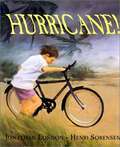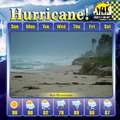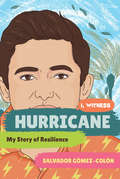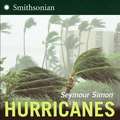- Table View
- List View
Hunting: A Cultural History (The MIT Press Essential Knowledge series)
by Jan E. Dizard Mary Zeiss StangeThe history of hunting, from Stone Age hunter-gatherers to today&’s sport hunters.Hunting has a long history, beginning with our hominid ancestors. The invention of the spear allowed early humans to graduate from scavenging to actual hunting. The famous cave paintings at Lascaux show a meticulous knowledge of animal behavior and anatomy that only a hunter would have. This volume in the MIT Press Essential Knowledge series traces the evolution of hunting, from Stone Age hunting and gathering to today&’s regulated sport hunting. Humans have been hunting since we became human—but did hunting make us human? The authors consider and question the &“hunting hypothesis of human origins,&” noting that according to this theory, &“hunting&” meant hunting by men. They explore hunting in the Stone Age and how, beginning some ten thousand years ago, the spread of agriculture led to the emergence of empires and attempts by elites to monopolize hunting. They examine the democratization of hunting in the American colonies and how hunters decimated, but then, in the twentieth century, rallied to save game animals from extinction. They describe how some European and postcolonial societies have managed wildlife and hunting, consider the difficulties of living with abundant wildlife—even as many nongame species are disappearing—and trace the implications of the increasing participation of women in hunting for the future of hunting.
Huracán: Mi Historia De Resiliencia (I, Witness #0)
by Salvador Gómez-ColónIn this Spanish-language edition of Hurricane, a young activist shares how he combated a public health emergency after Hurricane Maria. In 2017, less than three weeks after Salvador Gómez-Colón’s fifteenth birthday, Puerto Rico was struck by a historic Category 4 hurricane. Residents were completely caught in the dark; news about Hurricane Maria broke only two days before it made landfall. Salvador and his family fared better than most, but many in his community were left with destroyed homes and little access to basic resources. Unable to ignore this suffering, Salvador put his good fortune to good use, starting a fund-raising campaign that would bring solar-powered lamps and hand-powered washing machines to thousands of families in need. This Spanish-language edition of Salvador’s propulsive first-person narrative brings a compelling story of determination, compassion, and hope to a wider audience. “A harrowing tale of survival and an inspiring tale of altruism.”— School Library Journal, starred review “Compellingly written with an emphasis on compassion.”—Booklist, starred review
Hurricane (It's A Disaster! Series)
by Jessica RudolphA giant, spinning storm forms over the ocean. People living on the coast start to flee inland for safety. Once the storm makes landfall, heavy rains and fast-moving winds knock down trees and destroy homes. In this captivating introduction to hurricanes, early readers will be swept up in the dramatic text that describes the first signs of a hurricane, its destructive power, and, most importantly, how to stay safe from a hurricane's devastating winds and rains. Each 24-page book features controlled text with age-appropriate vocabulary and simple sentence construction. Stunning photos closely align with descriptive text that will grab kids' attention. Emergent readers won't be able to stop turning the pages as they learn about the forces of nature that can wreak havoc on our world.
Hurricane Agnes in the Wyoming Valley (Images of America)
by Bryan GlahnAlthough history records the hurricane that struck northeastern Pennsylvania in June 1972 as "Agnes," residents of the Wyoming Valley affected by the storm and the resulting damage simply refer to it as "the flood." As the Susquehanna River rose to over 40 feet and left her banks, citizens could do nothing but watch as their lives were forever changed. A raging torrent unearthed dozens of previously resting bodies in the Forty Fort Cemetery, houses were knocked off their foundations or swept away entirely, and citizens took to their boats to rescue those who did not heed the warnings of the sirens that wailed when the waters began to surge through the city streets. And yet, amidst the drama, a wedding--scheduled long before the storm--proceeded, though not quite as envisioned by the bride and groom.
Hurricane And Tornado (Dk Eyewitness Books)
by Jack ChallonerEyewitness: Hurricane & Tornado is a compelling guide to nature's most dangerous and destructive forces. Striking images, models and illustrations offer a unique view of catastrophic weather conditions allowing readers to see into the eye of a cyclone, witness hailstones the size of tennis balls, and learn how a gentle mountain stream can become a raging surge within a few minutes. Learn the techniques developed through the centuries to forecast weather, see a chicken that was stripped of its feathers by a tornado, and how human activity can cause weather patterns to change.
Hurricane Andrew: Ethnicity, Gender and the Sociology of Disasters
by Walter Gillis Peacock Betty Hearn Morrow Hugh GladwinThis book explores how social, economic and political factors set the stage for Hurricane Andrew by influencing who was prepared, who was hit the hardest, and who was most likely to recover. Employing unique research data the authors analyze the consequences of conflict and competition on disaster preparation, response and recovery, especially where associated with race, ethnicity and gender.
Hurricane Camille: Monster Storm of the Gulf Coast
by Philip D. HearnNominated Best Nonfiction Book for 2004—Mississippi Institute of Arts and LettersOn August 17, 1969, Hurricane Camille roared out of the Gulf of Mexico and smashed into Mississippi's twenty-six miles of coastline. Winds were clocked at more than 200 miles per hour, tidal waves surged to nearly 35 feet, and the barometric pressure of 26.85 inches neared an all-time low. Survivors of the killer storm date events as BC and AC—Before Camille and After Camille. The history of Hurricane Camille is told here through the eyes and the memories of those who survived the traumatic winds and tides. Their firsthand accounts, compiled a decade after the storm and archived at the University of Southern Mississippi, form the core of this book. Property damage exceeded $1.5 billion, $48.6 billion in today's dollars. Fashionable beachfront homes, holiday hotels, marinas, night clubs, and souvenir shops were devastated. The death toll in the state's three coastal counties—Harrison, Hancock, and Jackson—reached 131, with another 41 persons never found. The rampaging storm then moved north through Tennessee, Kentucky, West Virginia, and Virginia and sparked flash floods that killed more than 100 in Virginia before moving into the Atlantic. Camille is one of only three Category 5 hurricanes ever to hit the U.S. mainland. Along the Coast today, vacant lots, slabs of concrete, and mysterious staircases and driveways leading to nowhere are Camille's eerie reminders. The ruins that remain, however, are overshadowed by the dazzle and fun at the dozen casinos and high-rise hotels that dominate the modern beachfront. Once more the seashore is thriving. Rambling homes, the neon lights of motels and family restaurants, and the nets and masts of shrimp boats mark the skyline. For the Mississippi Coast, a historic retreat between New Orleans on the west and Mobile on the east—these are the best of times. This gripping story of the Coast's most devastating storm recounts what happened on a terrifying night more than three decades ago. It reminds, too, what can happen again.
Hurricane Force: In the Path of America’s Deadliest Storms
by Joseph B. TreasterThis book is a complete behind-the-scenes account of one of nature's most terrifying and fascinating disasters -- Hurricane Katrina attacking New Orleans on August 29, 2005 -- by the New York Times journalist Joseph B. Treaster who watched the devastating power of the hurricane up close.
Hurricane Hazel in the Carolinas
by Jay BarnesHurricane Hazel swept the U.S. Eastern Seaboard in mid-October 1954, eventually landing in the record books as one of the most deadly and enduring hurricanes. After punishing Haiti with mudslides that killed hundreds, Hazel edged northward, striking the Carolina coast as a ferocious category four. Landfall occurred near the South Carolina-North Carolina border, where a massive surge washed over barrier beaches and swept away hundreds of homes. Coastal communities like Myrtle Beach, Long Beach, Carolina Beach, and Wrightsville Beach caught the brunt of the storm tide and suffered heavy damages. Hazel barreled inland and battered eastern North Carolina with 100-plus mile-per-hour gusts that toppled trees and power lines and peeled away rooftops. It then raced northward setting new wind records across seven states. In Ontario, it spawned flash floods that became the most deadly in Canadian history. When it was all over, Hazel had killed more than 1,000 and left a trail of destruction across the hemisphere. But nowhere was its impact more dramatic than in the Carolinas.
Hurricane Hazel: Canada's Storm of the Century
by Mike Filey Jim GiffordOn October 15, 1954, Hurricane Hazel battered southern Ontario, leaving in its wake a terrible toll: thousands homeless, million in property damage, and, worst of all, 81 people dead. Hazel destroyed bridges, submerged towns, and drowned unsuspecting Ontarians in their homes and cars. Raymore Drive in Weston was decimated when the Humber River swelled by eight feet, taking the lives of 32 residents in only one hour. In Etobicoke, five volunteer firemen drowned while trying to reach marooned motorists. Towns and villages from Toronto north to Timmins felt Hazel’s fury. After the storm, people walked the now-surreal streets of their towns: cars upside-down and wrapped in power lines, iceboxes and dead cows hanging from trees, houses flattened, toys and furniture floating down the street. On the 50th anniversary of the storm, Jim Gifford has captured that fatal night in the voices of those who survived it, from residents who lived along the surging Humber River to a policeman who rescued families from their rooftops to firemen and Boy Scouts who searched for victims along the riverbanks. Including more than 100 never-before-published photographs, Hurricane Hazel: Canada’s Storm of the Century documents one of the worst natural disasters in Canadian history.
Hurricane Katrina
by Peter BenoitA True Book-Disasters The horror! The humanity! The heroes! Read these true, heartstopping tales about unimaginable devastation wrought by nature and humans, and the amazing spirit of the people who united in recovery in the aftermath of nuclear explosions, worldwide diseases, earthquakes and hurricanes, and terrorist attacks.
Hurricane Katrina and the Forgotten Coast of Mississippi
by Susan L. Cutter Christopher T. Emrich Jerry T. Mitchell Walter W. Piegorsch Mark M. Smith Lynn Weber Susan L. Cutter Christopher T. Emrich Jerry T. Mitchell Walter W. Piegorsch Mark M. SmithHurricane Katrina slammed into the Gulf Coast in August 2005 with devastating consequences. Almost all analyses of the disaster have been dedicated to the way the hurricane affected New Orleans. This volume examines the impact of Katrina on southern Mississippi. While communities along Mississippi's Gulf Coast shared the impact, their socioeconomic and demographic compositions varied widely, leading to different types and rates of recovery. This volume furthers our understanding of the pace of recovery and its geographic extent, and explores the role of inequalities in the recovery process and those antecedent conditions that could give rise to a "recovery divide. " It will be especially appealing to researchers and advanced students of natural disasters and policy makers dealing with disaster consequences and recovery.
Hurricane Katrina: The Mississippi Story
by James Patterson SmithThis book presents the fullest account yet written of the impact of Hurricane Katrina on the Mississippi Gulf Coast. Rooted in a wealth of oral histories, it tells the dramatic but underreported story of a people who confronted the unprecedented devastation of sixty-five-thousand homes when the eye wall and powerful northeast quadrant of the hurricane swept a record thirty-foot storm surge across a seventy-five-mile stretch of unprotected Mississippi towns and cities. James Patterson Smith takes us through life and death accounts of storm day, August 29, 2005, and the precarious days of food and water shortages that followed. Along the way the narrative treats us to inspiring episodes of neighborly compassion and creative responses to the greatest natural disaster in American history. The heroes of this saga are the local people and local officials. In often moving accounts, the book addresses the Mississippi Gulf Coast's long struggle to remove a record-setting volume of debris and get on with the rebuilding of homes, schools, jobs, and public infrastructure. Along the way readers are offered insights into the politics of recovery funding and the bureaucratic bungling and hubris that afflicted the storm response and complicated and delayed the work of recovery. Still, there are ample accounts of things done well, and a moving chapter gives us a feel for the psychological, spiritual, and material impact of the eight hundred thousand people from across the nation who gave of themselves as volunteers in the Mississippi recovery effort.
Hurricane Lizards and Plastic Squid: The Fraught and Fascinating Biology of Climate Change
by Thor HansonA beloved natural historian explores how climate change is driving evolution In Hurricane Lizards and Plastic Squid, biologist Thor Hanson tells the remarkable story of how plants and animals are responding to climate change: adjusting, evolving, and sometimes dying out. Anole lizards have grown larger toe pads, to grip more tightly in frequent hurricanes. Warm waters cause the development of Humboldt squid to alter so dramatically that fishermen mistake them for different species. Brown pelicans move north, and long-spined sea urchins south, to find cooler homes. And when coral reefs sicken, they leave no territory worth fighting for, so aggressive butterfly fish transform instantly into pacifists. A story of hope, resilience, and risk, Hurricane Lizards and Plastic Squid is natural history for readers of Bernd Heinrich, Robin Wall Kimmerer, and David Haskell. It is also a reminder of how unpredictable climate change is as it interacts with the messy lattice of life.
Hurricane Preparedness Handbook
by Bob StearnsDon’t wait until it’s too late. Prepare now! We’ve all seen the ruin that a hurricane can bring. No one can stop a hurricane, but proper preparation can limit damage, protect long-term finances, and even save lives. The Hurricane Preparedness Handbook is an invaluable, step-by-step guide for everyone who lives in a region threatened by these terrifying storms. Here is advice on: Understanding the category warning system Buying the right insurance Protecting your home from an oncoming storm Choosing and using an electrical generator Proper provisioning and use of food and water Dealing with a storm’s aftermath And much more! There is no substitute for experience and expert advice, and this easy-to-store, easy-to-use handbook offers everyone a chance to learn from the past and prepare for the future. No one should go through a hurricane without first reading this book.
Hurricane Risk in a Changing Climate (Hurricane Risk #2)
by Jennifer M. Collins James M. DoneHow is a changing climate affecting hurricanes, and how are these changes intersecting with our changing exposure and vulnerability in ways that affect tropical cyclone risk? Crucially, how should this understanding be incorporated into risk management practice? This book takes a cross-sectoral look at how damaging tropical cyclone characteristics are changing and presents novel approaches to integrate science with risk assessment. In this new era of tropical cyclone impacts, understanding effective risk management practice in a changing climate is more important than ever.This book details the outcomes of new research focusing on climate risk related to hurricanes in a changing climate. Topics include characteristics of tropical cyclone risk, perspectives on hurricane risk management strategies in the built environment, and implications for commercial risk. Inspired by the Symposium on Hurricane Risk in a Changing Climate, this book brings together leading international academics and researchers, and provides a source reference for both risk managers and climate scientists for research on the interface between tropical cyclones, climate, and risk.8 chapters are available open access under a Creative Commons Attribution 4.0 International License via link.springer.com.
Hurricane Sandy on New Jersey's Forgotten Shore
by Abigail PerkissHurricane Sandy on New Jersey's Forgotten Shore brings to life the individual and collective voices of a community: victims, volunteers, and state and federal agencies that came together to rebuild the Bayshore after the Superstorm Sandy in 2013. After the tumultuous night of October 29, 2012, the residents of Monmouth, Ocean, and Atlantic Counties faced an enormous and pressing question: What to do? The stories captured in this book encompass their answer to that question: the clean-up efforts, the work with governmental and non-governmental aid agencies, and the fraught choices concerning rebuilding. Through a rich and varied set of oral histories that provide perspective on disaster planning, response, and recovery in New Jersey, Abigail Perkiss captures the experience of these individuals caught in between short-term preparedness initiatives that municipal and state governments undertook and the long-term planning decisions that created the conditions for catastrophic property damage. Through these stories, Hurricane Sandy on New Jersey's Forgotten Shore lays bare the ways that climate change and sea level rise are creating critical vulnerabilities in the most densely populated areas in the nation, illuminating the human toll of disaster and the human capacity for resilience.
Hurricane Watch (Let's-Read-and-Find-Out Science 2)
by Melissa StewartRead and find out about how hurricanes form, how scientists track the storms, and what you can do to keep yourself safe if one strikes in this colorfully illustrated nonfiction picture book.Winds whip. Waves crash. Rain pours down. A superstorm moves across the ocean and gets closer and closer to land. Hurricane watch! Perfect for budding meteorologists, and recognized as an Outstanding Science Trade Book by the National Science Teachers Association, Hurricane Watch is bursting with fascinating facts paired with engaging visuals and diagrams.This picture book also includes a Find Out More section with an activity on air pressure, web research prompts, and a glossary of storm and weather vocabulary. Both text and artwork were vetted by Dr. William J. Brennan of the National Oceanic and Atmospheric Administration for accuracy.This is a clear and appealing science book for early elementary age kids, both at home and in the classroom. It's a Level 2 Let's-Read-and-Find-Out, which means the book explores more challenging concepts for children in the primary grades. The 100+ titles in this leading nonfiction series are:hands-on and visualacclaimed and trustedgreat for classroomsTop 10 reasons to love LRFOs:Entertain and educate at the same timeHave appealing, child-centered topicsDevelopmentally appropriate for emerging readersFocused; answering questions instead of using survey approachEmploy engaging picture book quality illustrationsUse simple charts and graphics to improve visual literacy skillsFeature hands-on activities to engage young scientistsMeet national science education standardsWritten/illustrated by award-winning authors/illustrators & vetted by an expert in the fieldOver 130 titles in print, meeting a wide range of kids' scientific interestsBooks in this series support the Common Core Learning Standards, Next Generation Science Standards, and the Science, Technology, Engineering, and Math (STEM) standards. Let's-Read-and-Find-Out is the winner of the American Association for the Advancement of Science/Subaru Science Books & Films Prize for Outstanding Science Series.
Hurricane Watch: Forecasting the Deadliest Storms on Earth
by Jack Williams Bob SheetsThe ultimate guide to the ultimate storms, Hurricane Watch is a fascinating blend of science and history from one of the world's foremost meteorologists and an award-winning science journalist. This in-depth look at these awe-inspiring acts of nature covers everything from the earliest efforts by seafarers at predicting storms to the way satellite imaging is revolutionizing hurricane forecasting. It reveals the latest information on hurricanes: their effects on ocean waves, the causes of the variable wind speeds in different parts of the storm, and the origins of the super-cooled shafts of water that vent at high altitudes. Hurricane Watch is a compelling history of man's relationship with the deadliest storms on earth.Includes:- The story of the nineteenth-century Cuban Jesuit whose success at predicting the great cyclones was considered almost mystical.- A new look at Isaac Cline, whose infamous failure to predict the Galveston Hurricane left him obsessed with the devastating effects of storm surge.- The story of the Hurricane Hunters, including the first man ever to deliberately fly into a hurricane.- A complete account of how computer modeling has changed hurricane tracking.- A history of Project Stormfury: the only significant, organized effort to reduce the damaging strength of severe hurricanes.- A unique firsthand account of Hurricane Andrew by both authors, who were at the National Hurricane Center when Andrew struck.- A listing of the deadliest storms in history.
Hurricane and Tornado (DK Eyewitness)
by DKBecome an eyewitness to nature&’s most extreme weather phenomena. See inside the eye of a cyclone, witness hailstones the size of tennis balls, and learn how a gentle mountain stream can become a raging surge within a few minutes. Discover a bridge that collapsed due to severe gusts of wind, and learn about a tree species in southwest Africa that can survive several years of drought. Along the way, you&’ll uncover historical items that reveal how ancient civilizations predicted the weather as well as the weather-forecasting techniques that have developed over the centuries and how human activity can cause weather patterns to change.Loved and trusted for over 30 years, Eyewitness has a new look and even more content:• A bite-sized formula of text with images that kids love!• Fully revised and fact-checked by subject specialists• Packed with facts, infographics, statistics, and timelines• Updated with brand new eyewitness accounts from experts in the fieldEyewitness Hurricane & Tornado uses a groundbreaking visual layout that makes learning fun for kids aged 9-12. With striking images, models, and illustrations, this visual guide offers a unique view of catastrophic weather conditions. From polar regions to the tropics, this storm book shows the effects of nature&’s most extreme weather.Eyewitness content approved by -ologists!DK&’s Eyewitness kids books are updated and fact-checked by subject specialists, with brand new first-hand eyewitness accounts throughout from experts in the field. A best-selling series known and trusted for generations, with a fresh new look and up-to-date content. What will you Eyewitness next?Join the journey to combat climate change with Eyewitness Climate Change or leave no stone left unturned with Eyewitness Rock & Mineral. Do you think you&’ve found your topic of interest? DK has even more extreme weather books for kids and adults alike find them all by searching for &“DK weather books&”.
Hurricane in the Hamptons, 1938
by Mary CummingsThe 1938 hurricane, the most severe and terrifying storm to hit Long Island in living memory, struck on September 21, a day that had dawned bright and fair in the seaside communities between Westhampton Beach and Montauk Point. Unaware of the storm whipping itself into a frenzy just miles away, village residents were going about their normal tasks when it struck, killing more than 30 and wreaking unprecedented destruction before nightfall. In Hurricane in the Hamptons, 1938, the story is told in more than 150 photographs, most of them taken by stunned residents in the immediate aftermath of the storm.
Hurricane!
by Jonathan LondonA young boy describes the experiences of his family when a hurricane hits their home on the island of Puerto Rico.
Hurricane: My Story Of Resilience (I, Witness #2)
by Salvador Gómez-ColónLaunching a propulsive middle grade nonfiction series, a young man shares how he combated Puerto Rico’s public health emergency after Hurricane Maria. Suffering heavy damage in the wake of Hurricane Maria in 2017, Puerto Rican communities lacked access to clean water and electricity. Salvador Gómez-Colón couldn’t ignore the basic needs of his homeland, and knew that nongovernmental organizations and larger foreign philanthropies could only do so much. With unstoppable energy and a deep knowledge of local culture, Salvador founded Light and Hope for Puerto Rico and raised more than $100,000 to purchase and distribute solar-powered lamps and hand-powered washing machines to households in need. With a voice that is both accessible and engaging, Salvador recalls living through the catastrophic storm and grappling with the destruction it left behind. Hurricane brings forward a captivating first-person account of strength, resilience, and determination, and heralds the start of a new series of compelling narrative nonfiction by young people, for young people.
Hurricanes
by Seymour SimonTakes young readers on an in-depth exploration of one of the most awe-inspiring and devastating events in nature: hurricanes. Award-winning science writer Seymour Simon explains what hurricanes are and how they develop; what storm surges are; and the basics of forecasting and precautions that families should take. Booklist commented: "This is unsurpassed for kindling interest in a scientific subject and communicating an understanding of its scope and significance".
